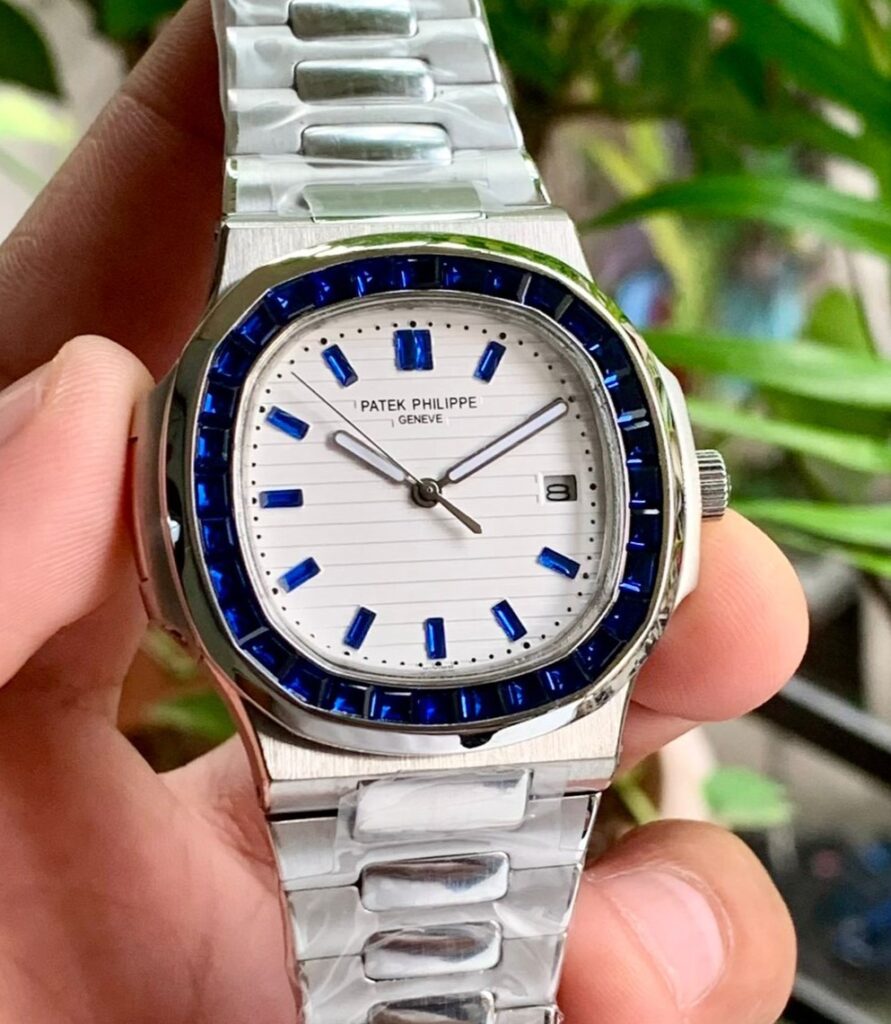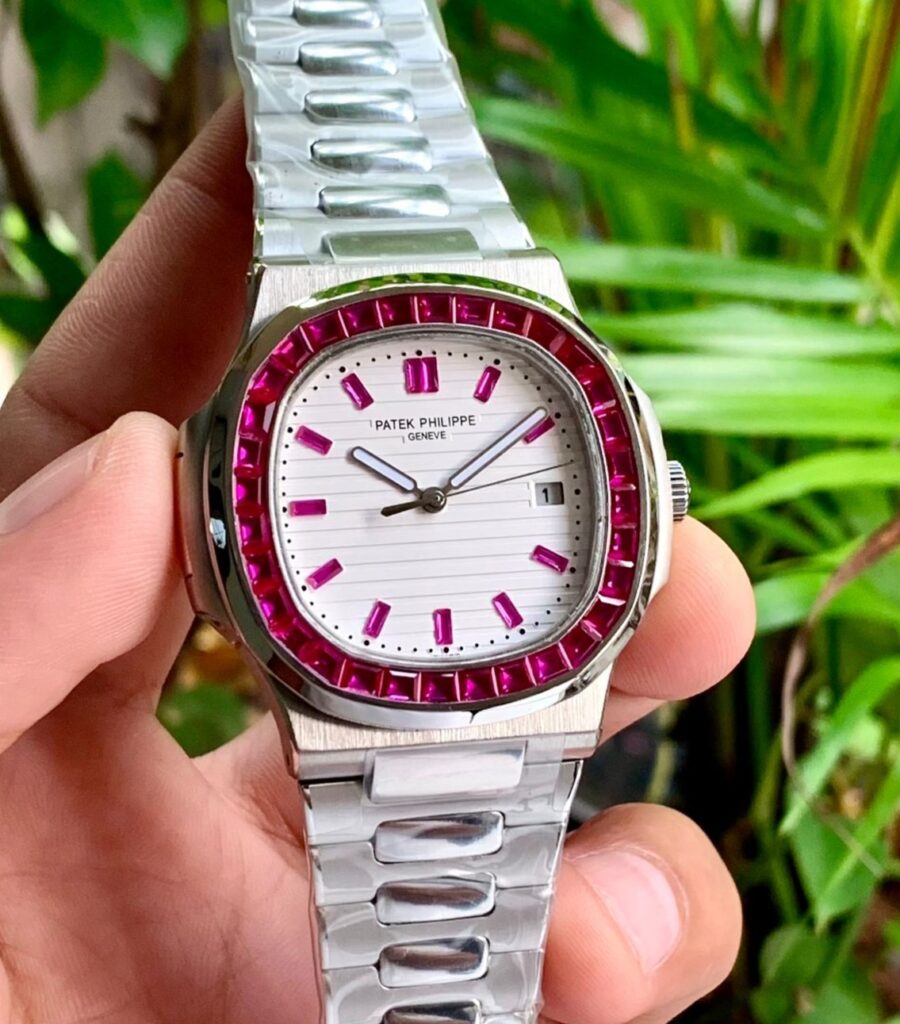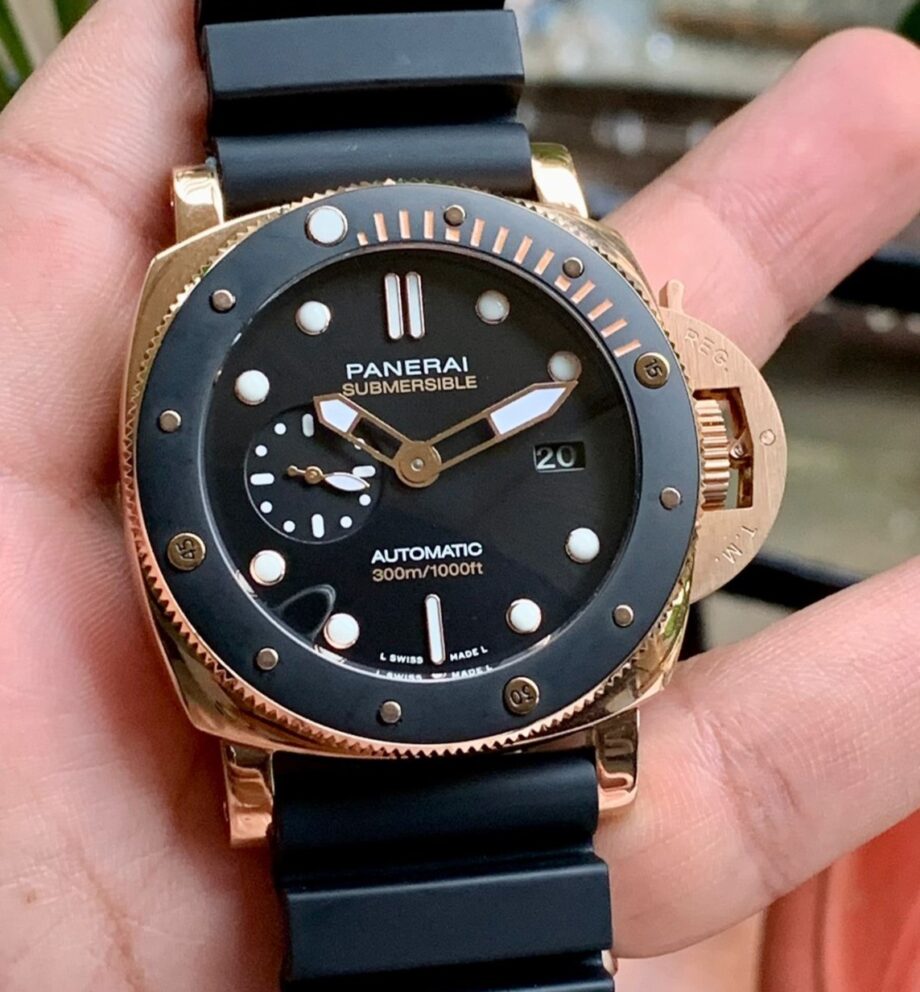In the world of luxury watches, ceramic timepieces stand out not only for their sleek, modern designs but also for their high price tags. For those unfamiliar with the nuances of horology, the cost of a ceramic watch may seem puzzling. After all, ceramic is generally thought of as a material used for household items, not the intricate, fine craftsmanship of high-end watches. However, when you look deeper into the qualities and manufacturing processes behind ceramic watches, you begin to understand why they are priced so highly.
The Evolution of Ceramic in Watchmaking
Ceramic watches have become a symbol of modern elegance and technological advancement in the world of horology. The history of ceramic watches dates back to the late 20th century, with ceramic first being used in the production of watch components like bezels. Early adopters, including renowned Swiss watchmaker Rado, began experimenting with ceramic as a material for their timepieces, recognizing its potential for durability, aesthetics, and comfort. The breakthrough came with the use of high-tech ceramics, which combined the best attributes of traditional ceramics with new technologies.
Today, ceramic watches are highly regarded for their ability to combine functionality with luxury. Unlike traditional materials like stainless steel or gold, ceramic offers properties that make it particularly suited to high-end watchmaking. The growing demand for ceramic watches has led to an increase in their cost, which can be attributed to several factors, from the complex manufacturing process to the material’s unique characteristics.
The Intricate Manufacturing Process
One of the main reasons ceramic watches are so expensive is the elaborate manufacturing process involved in creating them. High-quality ceramic used in watches, such as zirconia ceramic, is not the same as the ceramic you would find in everyday items like cups or tiles. It requires a precise, multi-step process that involves high temperatures, advanced machinery, and expert craftsmanship.
The creation of ceramic watch cases typically begins with zirconium powder, which is blended with stabilizing agents and then shaped into the desired form. This mixture is then subjected to high temperatures in a process known as sintering, which causes the material to harden. The result is a dense, durable, and scratch-resistant ceramic that is both lightweight and incredibly strong. However, this process is not only time-consuming but also requires sophisticated technology and highly skilled labor.
After the ceramic is shaped and sintered, it must be carefully polished to achieve the sleek, glossy finish that is characteristic of high-end ceramic watches. The polishing process is delicate and labor-intensive, requiring expert hands to ensure a smooth and even finish. The entire process from start to finish can take several weeks or even months, contributing to the overall cost of the watch.
Durability and Scratch Resistance
One of the key attributes that make ceramic watches so desirable is their durability. Ceramic is renowned for its exceptional scratch resistance, which is one of the most important factors in the longevity of a watch. While traditional metal watches can become scratched or dented over time, ceramic watches retain their pristine appearance for years, even under heavy use.
Ceramic is also highly resistant to corrosion, making it ideal for watches that are exposed to elements such as water, sweat, and oils from the skin. In fact, ceramic watches are often favored by athletes and individuals with active lifestyles due to their resilience and ability to maintain their aesthetic appeal despite the wear and tear of daily use.
However, it’s important to note that while ceramic is scratch-resistant, it is not entirely indestructible. The material can be prone to chipping or breaking under extreme force, which is why it’s crucial for watchmakers to carefully engineer the components to reduce the risk of damage. This delicate balance between strength and fragility requires extensive testing and expertise, which contributes to the overall cost of producing ceramic watches.

Lightweight and Comfortable Design
Another reason ceramic watches command such a high price is their lightweight and comfortable nature. Ceramic is much lighter than metals like steel or gold, making it ideal for individuals who prefer a more comfortable watch that doesn’t feel heavy on the wrist. Despite being lightweight, ceramic is still incredibly strong, making it an attractive alternative to traditional metals.
The lightweight nature of ceramic also enhances the overall wearing experience, as the watch does not dig into the skin or cause discomfort over time. Many watch enthusiasts appreciate the balance of durability and comfort that ceramic provides, particularly for those who wear their timepieces for extended periods. The combination of these two qualities, along with the luxurious appearance of ceramic, makes it an appealing choice for high-end watchmakers.
Aesthetics and Modern Design
Ceramic watches are often lauded for their modern, sleek, and sophisticated design. The material’s natural sheen and glossy finish give the watch an attractive, almost futuristic appearance. Unlike metals, which can lose their luster over time due to oxidation or wear, ceramic retains its polished surface for years, maintaining its original look.
The versatility of ceramic also allows for a wide range of design possibilities. It can be molded into complex shapes and forms, allowing watchmakers to create unique and innovative timepieces. Some luxury watch brands even offer ceramic watches in different colors, further expanding the design potential. Whether it’s a high-gloss black or a vibrant white, ceramic watches are often seen as a statement piece that reflects both style and status.
Limited Production and Exclusivity
The exclusivity of ceramic watches plays a significant role in their high cost. While ceramic has become more popular in recent years, the production of ceramic watches is still limited compared to traditional metal watches. Many luxury brands only produce a small number of ceramic timepieces each year, which enhances their rarity and desirability.
Furthermore, watchmakers often release ceramic watches as part of limited-edition collections, which are made in small quantities to maintain exclusivity. These limited runs not only increase the perceived value of the watch but also create a sense of urgency among collectors and watch enthusiasts who are eager to acquire one of these rare timepieces. As a result, the cost of ceramic watches often exceeds that of other materials, as their exclusivity and rarity make them highly sought after by collectors.
The Brand Factor
The brand of the watch plays a significant role in the pricing of ceramic watches. High-end watchmakers like Rolex, Omega, and Rado are known for producing ceramic watches that are not only crafted with precision but also carry the prestige of the brand name. These brands have built a reputation over decades for producing high-quality timepieces, and their ceramic watches are no exception.
When you purchase a ceramic watch from a renowned brand, you are not only paying for the material and craftsmanship but also for the brand’s legacy and reputation. Luxury watch brands invest heavily in research and development to push the boundaries of design, and their ceramic watches often incorporate innovative features that set them apart from the competition. This combination of luxury, exclusivity, and craftsmanship is reflected in the price tag of ceramic watches from prestigious brands.
Ceramic and High-Tech Materials
Ceramic is often combined with other high-tech materials to further enhance the performance and appearance of the watch. For example, some ceramic watches feature ceramic-ceramic composites that offer even greater strength and durability. These materials may be blended with titanium or other advanced substances to create a watch that is not only scratch-resistant but also resistant to extreme temperatures, pressure, and wear.
The integration of these high-tech materials adds to the overall cost of the watch, as they require specialized knowledge and cutting-edge technology to produce. These innovations are designed to improve the overall functionality of the watch, making it more resistant to environmental factors and increasing its lifespan. As a result, the cost of ceramic watches with high-tech materials is often higher than that of traditional timepieces made from simpler materials.
Craftsmanship and Expertise
The production of ceramic watches requires a high level of craftsmanship and expertise, which is reflected in the price. Creating a ceramic watch is a delicate process that demands precision at every step. From shaping the ceramic components to assembling the intricate movements, each stage of production requires skilled artisans who have mastered the art of watchmaking.
Many luxury watchmakers employ a team of specialists who focus exclusively on creating ceramic watches, ensuring that each piece meets the brand’s high standards. This level of craftsmanship takes time and effort, and the cost is passed on to the consumer. The intricate nature of ceramic watchmaking also means that fewer watches can be produced each year, further increasing their exclusivity and value.
Resale Value and Investment Potential
Ceramic watches, particularly those from well-known luxury brands, can also hold their value over time, making them an attractive investment. As mentioned earlier, the limited production and exclusivity of ceramic timepieces contribute to their rarity, which can drive up their resale value. For collectors and investors, purchasing a ceramic watch can be a way to not only enjoy the luxury of the timepiece but also to invest in something that could appreciate in value.
The resale value of ceramic watches can vary depending on factors such as the brand, condition, and rarity of the model. However, as more collectors and enthusiasts seek out ceramic watches, their value is expected to rise. This makes ceramic watches not just a luxury purchase but also a smart investment for those looking to expand their collection or build long-term wealth.
Advanced Technology in Ceramic Watches
Another significant reason ceramic watches are expensive is the cutting-edge technology integrated into their designs and functionality. Modern ceramic watches often come with state-of-the-art movements and complications that require meticulous engineering and precise assembly. The combination of high-tech ceramic with these advanced watch mechanisms makes the watches more complex to produce. Many luxury watchmakers now include automatic or mechanical movements, which are far more intricate than quartz movements. The craftsmanship involved in creating these sophisticated mechanisms is labor-intensive, as they require skilled watchmakers who specialize in the intricate assembly of tiny, often delicate, parts.
Additionally, the ceramic itself can be enhanced with technologies such as high-tech coatings or special surface treatments to improve its durability even further. For example, certain brands have developed ceramic that is resistant to high-impact forces, temperature variations, and UV radiation, ensuring that the watch will maintain its integrity even under extreme conditions. Incorporating these features into a timepiece necessitates the use of precision machinery, as well as costly and time-consuming testing processes. All of these technological upgrades and innovations contribute to the overall price of the watch, solidifying its status as a luxury item.

Unique Craftsmanship and Hand-Polishing
The level of craftsmanship required for ceramic watches is also a major factor in their high price. While mass-produced watches can rely on automated machinery to complete much of the assembly process, ceramic timepieces require an immense amount of human involvement at each stage. Watchmakers who specialize in ceramics have to be highly skilled in both shaping the ceramic components and then meticulously hand-polishing the surfaces to a smooth, glossy finish. The polishing process is critical, as it ensures the watch has the characteristic luster that is synonymous with high-end ceramic watches.
This hand-polishing process is extremely time-consuming, as it often requires several hours of painstaking work for each individual piece. Even the slightest imperfection can reduce the overall quality of the timepiece, making it essential that skilled artisans oversee every step. Furthermore, the specific characteristics of ceramic—such as its hardness—make it a challenging material to work with, requiring specialized tools and equipment. The high level of attention to detail and the manual effort involved in producing these watches ultimately make them significantly more expensive than mass-produced timepieces.
Watch Collectors’ Market and Demand
The collector’s market for ceramic watches has also been a driving force behind their high price tags. As watch enthusiasts and collectors around the world increasingly recognize the beauty, durability, and exclusivity of ceramic timepieces, demand has surged. Ceramic watches are often seen as status symbols due to their rarity, modern aesthetics, and superior craftsmanship. Many luxury brands release limited-edition ceramic watches, which only increases the desire among collectors to secure one of these rare pieces.
These limited-run releases often see the prices skyrocket in the resale market, further enhancing the perception of ceramic watches as a desirable commodity. Collectors who are passionate about horology are willing to pay top dollar for a high-quality ceramic watch, knowing that it will hold its value over time. As a result, luxury watch brands and manufacturers recognize this demand and often produce fewer ceramic models to increase their desirability. The intersection of exclusivity, rarity, and the growing market for these timepieces has made ceramic watches not just a luxury purchase, but also an investment, driving their prices even higher.
Why Watchblend?
If you’re looking for a wide range of premium ceramic watches, look no further than Watchblend. We offer an exceptional selection of timepieces from world-renowned brands, featuring the finest ceramic materials, cutting-edge designs, and precision craftsmanship. Whether you’re a collector or a first-time buyer, Watchblend provides an excellent platform for acquiring high-quality ceramic watches that will stand the test of time.
With our easy-to-navigate online store and dedicated customer support, we ensure that your watch-buying experience is seamless and enjoyable. Explore our curated collection today and invest in a timepiece that combines luxury, innovation, and lasting value. At Watchblend, we’re committed to helping you find the perfect watch to match your style and sophistication.

